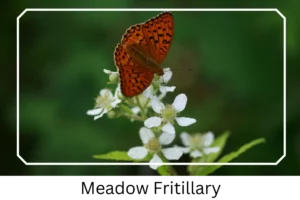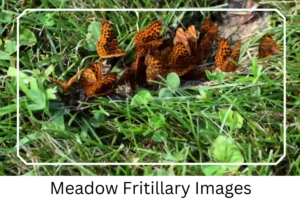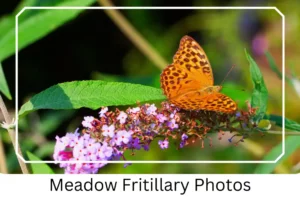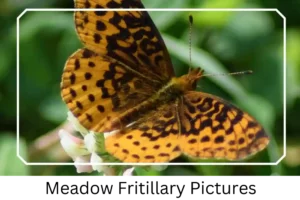Meadow Fritillary (Boloria bellona)
The Meadow Fritillary, scientifically known as Boloria bellona, is a captivating species within the brushfoot butterfly family, prevalent in various parts of North America. Renowned for their vibrant appearance and dynamic behavior, these butterflies are a delightful sight during the warmer months. The interaction between males and females, particularly their coordinated flights, adds an intriguing aspect to their natural history.
Scientific Classification
- Family: Nymphalidae
- Genus: Boloria
- Scientific Name: Boloria bellona
Overview
Belonging to the diverse fritillary species, the Meadow Fritillary thrives in sunny, open habitats where they engage in their low, yet adept flight. This species demonstrates a fascinating lifecycle that includes distinct stages from a uniquely textured caterpillar to a visually striking adult. Their reliance on specific host plants and their adaptive strategies for survival through different seasons underscore their ecological significance and the intricate balance within their ecosystems.
Description and Identification
Caterpillar
The larval stage presents a dark, either black or brownish-black body, adorned with irregular ridges. The caterpillar is also notable for its fine, tufted hairs along its back, arranged in a linear pattern. As a strategy against the cold, these larvae enter a period of hibernation during winter.
Pupa
Resembling an elongated seashell, the chrysalis varies in color from dark to yellowish to light brown. Its surface is textured with ridge-like unevenness, an adaptation that may provide camouflage. This stage is typically spent suspended from a twig or branch of the host plant, marking a transitional phase in the butterfly’s development.
Adult Butterfly
Sexual Dimorphism: This species exhibits sexual dimorphism, where males and females can be distinguished by physical appearance.
Color and Appearance: In flight or when resting with wings spread, the forewings display a squared-off tip, and both pairs of wings boast a reddish-orange hue with dense black markings. The underside of the hindwings reveals a complex pattern in orange and purplish brown, featuring an off-white basal patch. Males are distinguished by a prominent, bright yellow border on the underside of their wings.
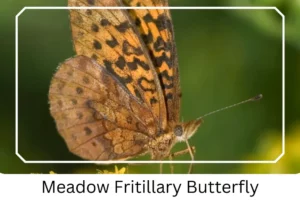
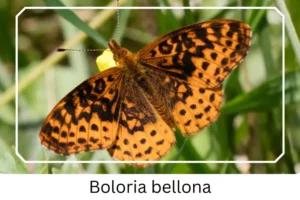 Average Wingspan: The Meadow Fritillary spans approximately 3.5 – 5.1 cm (1 3⁄8 – 2 inches), a testament to its delicate yet resilient build.
Average Wingspan: The Meadow Fritillary spans approximately 3.5 – 5.1 cm (1 3⁄8 – 2 inches), a testament to its delicate yet resilient build.
Flight Pattern: Characterized by a low, medium-speed flight, this species maneuvers through its habitat with grace and agility.
Eggs
The eggs are a greenish-yellow hue, delicately laid on twigs and plants associated with their host species, initiating the life cycle anew.
Quick Facts | |
| Distribution | Though commonly found in Mexico, the Meadow Fritillary’s range extends throughout Central and South America. |
| Habitat | Preferring wet, open environments, they are often seen in areas like streamsides, pastures, and fields. |
| Lifespan of Adults | Two to four weeks. |
| Host Plants | They have a particular affinity for violet plants, including the northern white violet (Viola pallens) and woolly blue violet (Viola sororia). |
| Adult Diet | The adult butterflies primarily feed on flower nectar, playing a role in the pollination process. |
How to Identify Meadow Fritillary?
Identifying the Meadow Fritillary can be an engaging activity for butterfly enthusiasts. Look for their distinct reddish-orange wings adorned with black markings, a unique combination among North American butterflies. The squared-off forewing tips are a notable characteristic when the wings are spread. In males, the bright yellow border underneath the wings is a key identifier. Observing their flight pattern can also aid identification; their medium-paced, low flight is characteristic of their species. Additionally, their presence in specific habitats, such as wet, open fields and along streamsides, can indicate their likelihood. To confidently identify these butterflies, familiarize yourself with their lifecycle stages, as each offers distinct features from the caterpillar’s ridged body to the pupa’s seashell-like appearance.
Did You Know?
- The name Bellona references the ancient Roman goddess of war, symbolized by a military helmet, reflecting perhaps the butterfly’s resilience and spirited life cycle.
- Meadow Fritillaries have a unique adaptation to survive winter; their larvae can hibernate, a rare trait among butterflies that enables them to thrive across diverse climates.
Conclusion
The Meadow Fritillary butterfly is a remarkable species, not just for its beauty but also for its fascinating biology and ecological role. Understanding and appreciating these butterflies can enhance our outdoor experiences and underscore the importance of conserving their natural habitats. As we learn more about them, from their distinct identification markers to their lifecycle and habitat preferences, we can better appreciate the intricate tapestry of life they are part of.

